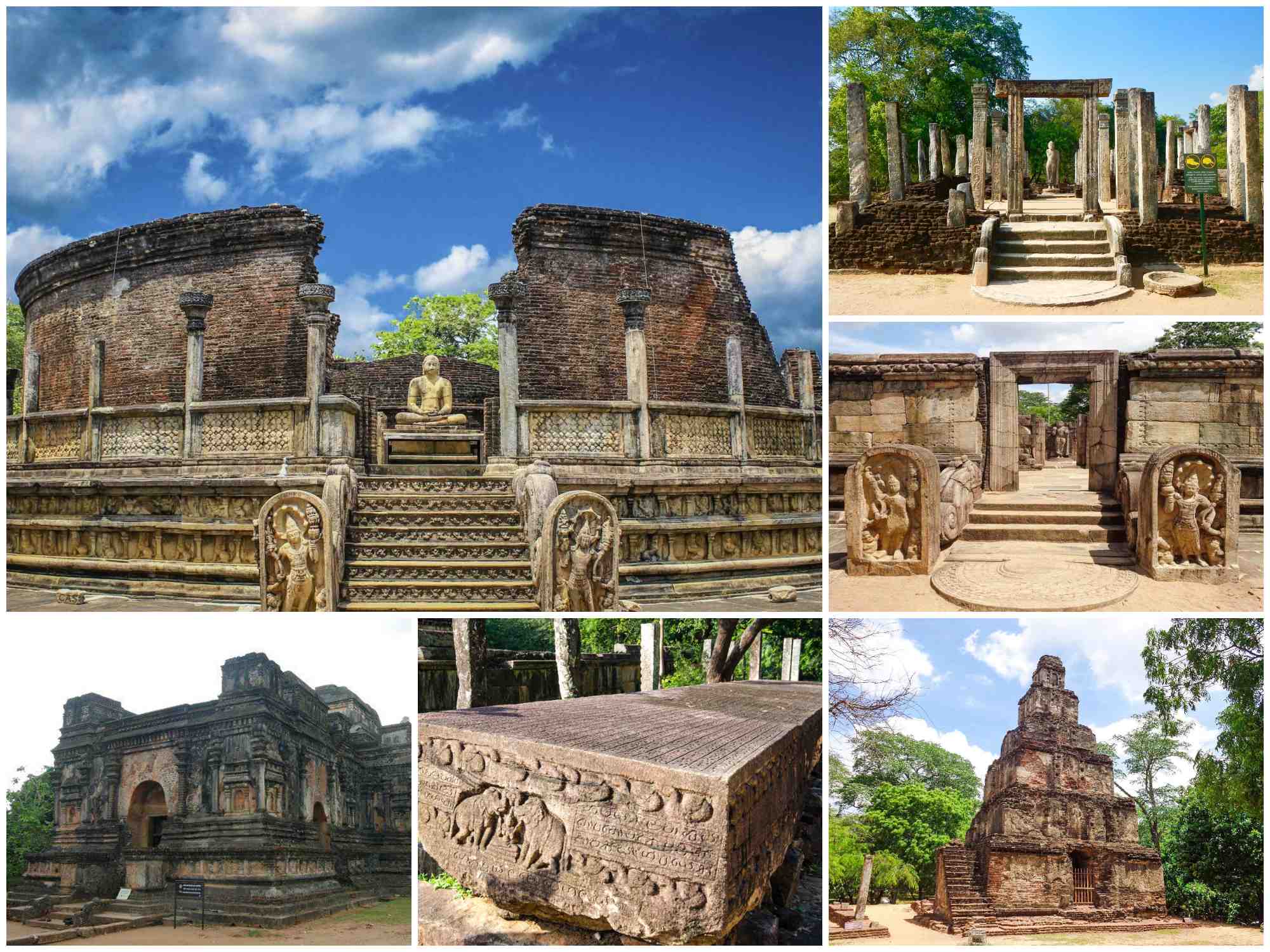
Quadrangle Polonnaruwa
Only a short stroll north of the royal palace ruins, the area known as the Quadrangle is literally that – a compact group of fascinating ruins in a raised-up area bounded by a wall. This rectangular walled enclosure, built on a raised terrace, was the religious heart of the city, conveniently close to the royal palace of Parakramabahu – the king would probably have come here to listen to readings from the Buddhist scriptures – and is now home to the finest and most varied collection of ancient buildings in Sri Lanka.
Vatadage ANCIENT RUIN
In the southeast of the Quadrangle, the vatadage (circular relic house) is typical of its kind. Its outermost terrace is 18m in diameter, and the second terrace has four entrances flanked by particularly fi ne guardstones. The moonstone at the northern entrance is reckoned to be the fi nest in Polonnaruwa, although not of the same standard as some at Anuradhapura. The four entrances lead to the central dagoba with its four Buddhas. The stone screen is thought to be a later addition, probably by Nissanka Malla. Thuparama Gedige ANCIENT RUIN At the southern end of the Quadrangle, the Thuparama Gedige is the smallest gedige (hollow Buddhist temple with thick walls)
Gal Pota
(“Book of Stone”), immediately east of the Hatadage, an enormous slab of granite, some nine metres long, covered in a densely inscribed panegyric praising the works of Nissankamalla. The stone itself, according to the inscription, weighs 25 tons and was brought over 90km from Mihintale, though exactly why this particular rock was considered remarkable enough to be transported from so far away remains unclear. On the end of the stone facing the Vatadage a carving shows the Hindu goddess Lakshmi being given a shower by two elephants.
Thuparama Gedige ANCIENT RUIN
At the southern end of the Quadrangle, the Thuparama Gedige is the smallest gedige in Polonnaruwa, but is also one of the best And the only one with its roof intact. The building shows a strong Hindu influence and is thought to date from the reign of Parakramabahu I. There are several Buddha images in the inner chamber, but they’re barely visible in the late afternoon light.
Hatadage ANCIENT RUIN
Also erected by Nissanka Malla, the Hatadage is a tooth-relic chamber; it is said to have been built in 60 days. Stand at the entrance and admire the symmetry of the doors receding into the distance. Lotus Mandapa The next building is the small but exquisite Lotus Mandapa , built by Nissankamalla. It features an unusual latticed stone fence and a small platform surmounted by stone pillars shaped as thrice-bent lotus buds on stalks. In the centre of the platform are the remains of a tiny dagoba which was, according to different interpretations, either used to hold relics or which served as a seat for Nissankamalla during religious ceremonies In front of the Lotus Mandapa stands an armless statue, popularly thought to represent Vijayabahu, though it might be a bodhisattva
Satmahal Prasada ANCIENT MONUMENT
In the northeast corner stands the unusual ziggurat-style Satmahal Prasada, which consists of six diminishing storeys , shaped like a stepped pyramid.
Atadage ANCIENT MONUMENT
A shrine for the tooth relic, the Atadage is the only surviving structure in Polonnaruwa dating from the reign of Vijayabahu I. Velaikkara Slab Inscription ANCIENT MONUMENT Just in case you thought that bureaucrats have evolved through the years, check out this 12th-century memorial slab with an equally lifeless slab of text tossing off credits in all directions.
Sri Lanka Travel Deals provides a range of tour options to explore Polonnaruwa, tailored to meet travelers’ needs. Send us a message, and we’ll respond promptly!
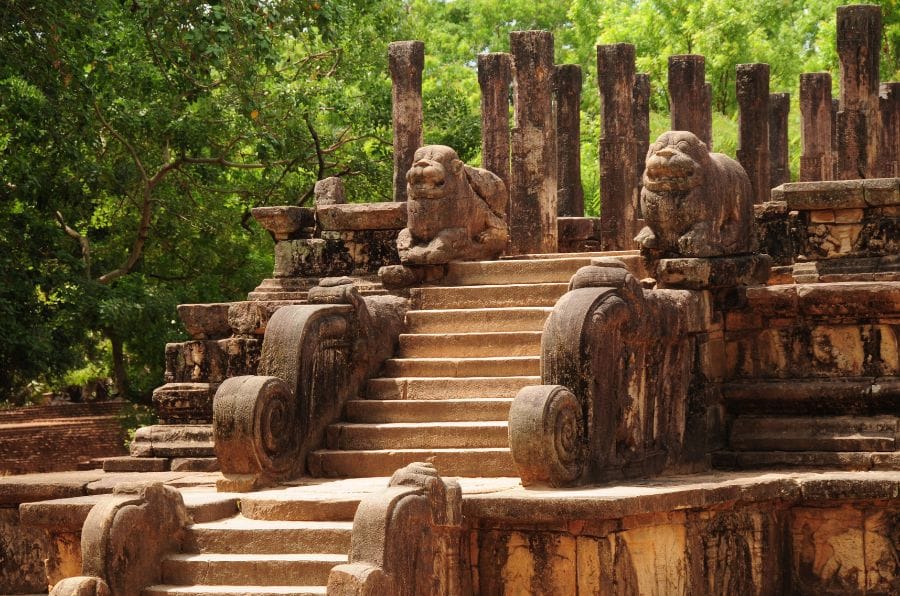

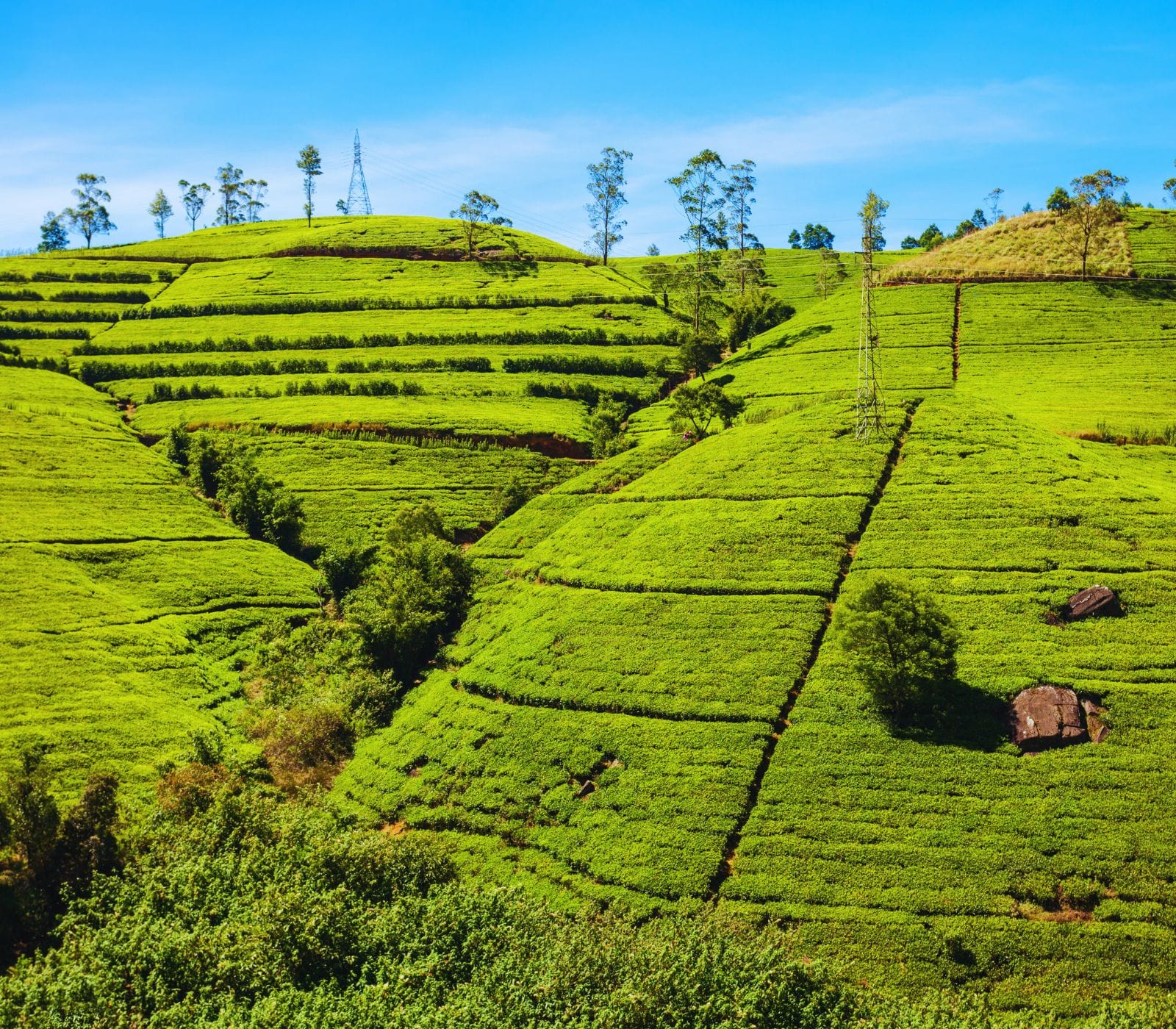
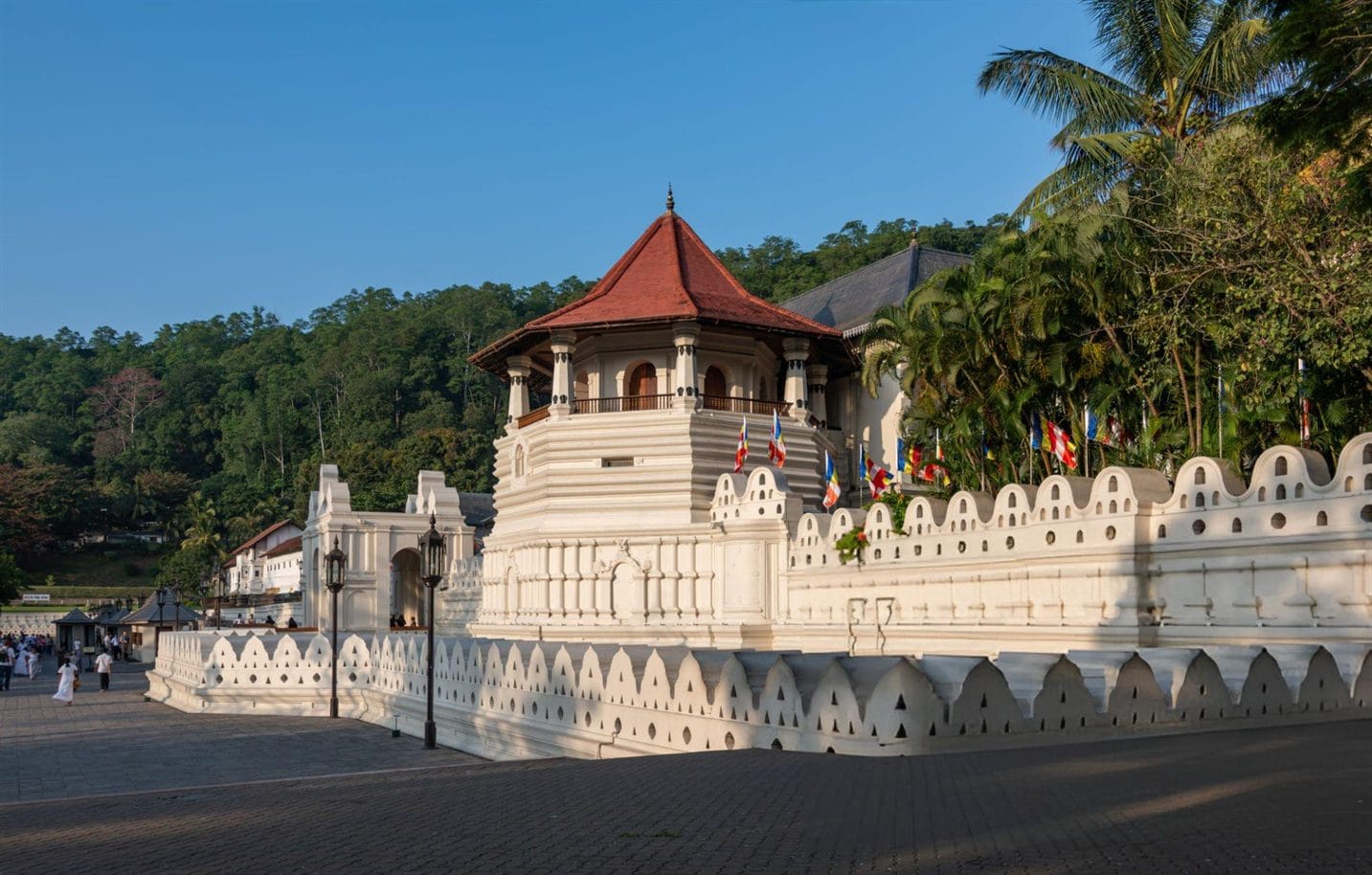
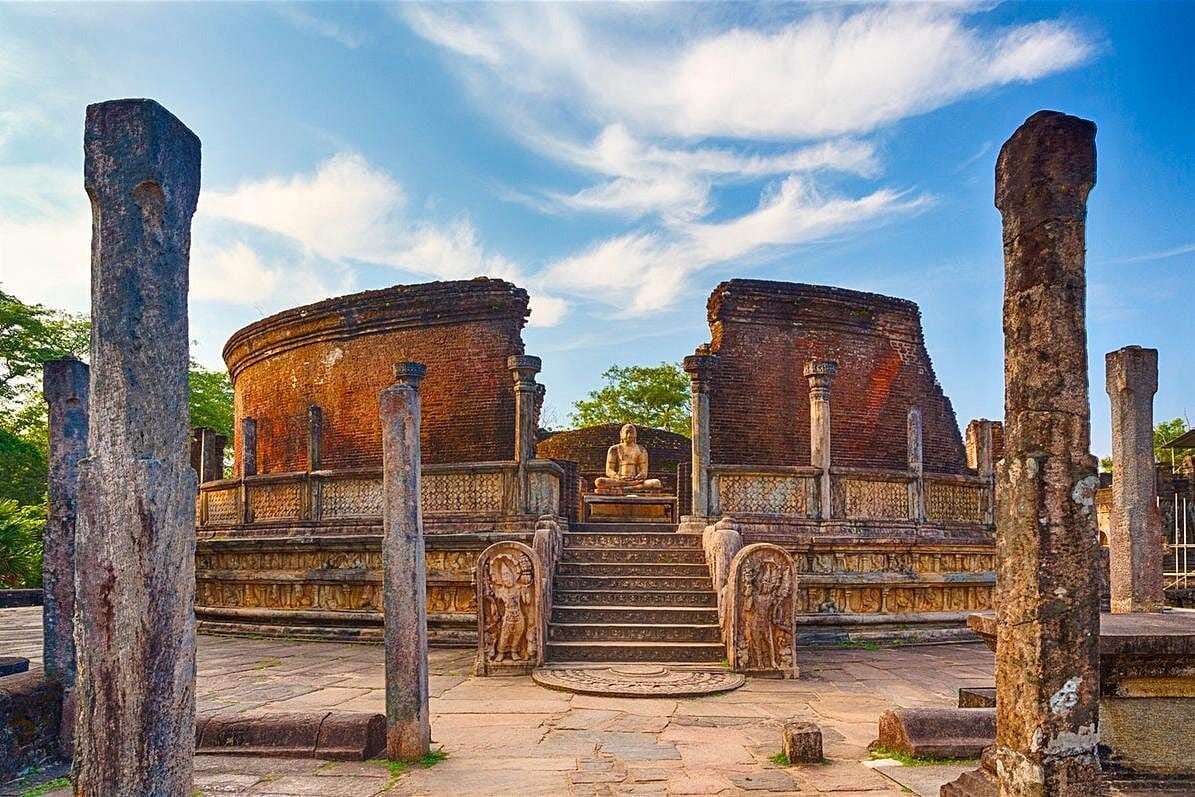





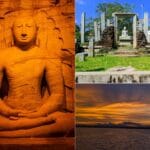


Leave a comment: